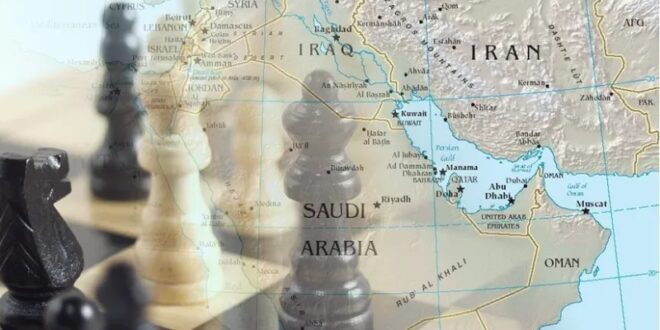Soon after entering office, US President Joe Biden instructed his Defense Department to carry out a detailed and comprehensive assessment of America’s military presence around the world.
In the words of Pentagon spokesman John Kirby, this appraisal, known as the Global Posture Review, will “help inform the secretary’s advice to the commander-in-chief about how we best allocate military forces in pursuit of our national interests.”
A review of the US military presence around the world is needed. After all, threats change over time. The need for certain capabilities and military forces in one part of the world may no longer be the case today as it was several decades ago. Without doubt, the findings of the review will have an impact on the Middle East — for better or worse.
Considering the frequency of leaks to the media, a surprisingly little amount of information is known about what the outcome might be. While no formal date has been given on the publication of the review, it is expected to be concluded in the coming weeks.
However, even with limited information about the details of the assessment, it is easy to infer some of the assumptions the administration is using.
The main focus of the review will be the Indo-Pacific region. In the past, US Defense Secretary Lloyd Austin has described China as the “pacing” threat for his department. This means that the training, funding and allocation of resources inside the Pentagon must be done, first and foremost, with China in mind.
It is also known that the Biden administration is willing to cut defense spending to reprioritize resources for domestic needs. Therefore, it is reasonable to assume that some regions around the world will see a reduction in US forces as a result of the Global Posture Review. It would be a strategic error for the US to reduce its military presence in the Middle East, but it would be prudent for regional policymakers to plan for this possibility.
There is no shortage of challenges and threats facing the US and its allies and partners in the Middle East. Obviously, the biggest threat comes from Iran. Since 1979, Tehran has pursued a policy of destabilization that has had a ripple effect across much of the region. The support and funding of proxy groups in Lebanon, Iraq, Syria and Yemen has made Iran one of the world’s largest state sponsors of terrorism.
Iran’s cavalier behavior in the Gulf is reminiscent of 19th-century piracy. Tehran’s pursuit of nuclear weapons is not only a threat to the region, but also to world peace.
As US policymakers in the Pentagon put the final touches to the Global Posture Review, there are three important points they should not forget.
First, Iran remains a serious threat. While China might be the “pacing” threat for the US, for many of Washington’s allies and partners, it is Iran that deserves such a title. In recent years, there has been no greater threat to US military personnel in the region than from Iran. The Global Posture Review needs to acknowledge that, as long as Iran pursues an aggressive foreign policy, the US military presence in the Middle East must remain robust.
Second, US policymakers need to understand how the Indo-Pacific region is connected, and in some cases integrated, into the broader Middle East region. It is not possible to have a serious China strategy without stability and security in the Middle East.
For example, the transit zones found in the Middle East region, such as the Suez Canal, Strait of Hormuz and Bab Al-Mandab Strait, are important to Washington’s security interests because they provide access to the Indo-Pacific. The security and stability of these maritime transit routes for the US Navy are also critical in terms of America’s ability to respond to a crisis in the Indo-Pacific in a timely manner.
Finally, the US needs to be more engaged in the region. Even if the Global Posture Review ends up increasing the number of US troops in the Middle East, additional forces must be accompanied by a stronger diplomatic presence.
Biden needs to restore US trust in the region and could start to do so by visiting the Middle East himself. At a minimum, he should be routinely speaking to his counterparts in the Gulf — but there is no substitute for face-to-face contact.
Considering the high stakes, his absence from the region amounts to geopolitical negligence. It is hard to believe that, 10 months into his presidency, he has not set foot in the Middle East.
With the Biden administration hoping that nuclear talks with Iran will resume in the coming weeks, the White House could be tempted to reduce the US military footprint in the Gulf as a gesture of goodwill to Tehran. However, this would send a dangerous signal to Iran at a time when US prestige and commitment are already questioned in light of the withdrawal from Afghanistan.
As long as US national security interests demand a military presence in the Middle East, and as long as the countries in the region are happy to welcome and host Americans, Washington should maintain, if not increase, troop levels in the region.
 Eurasia Press & News
Eurasia Press & News




